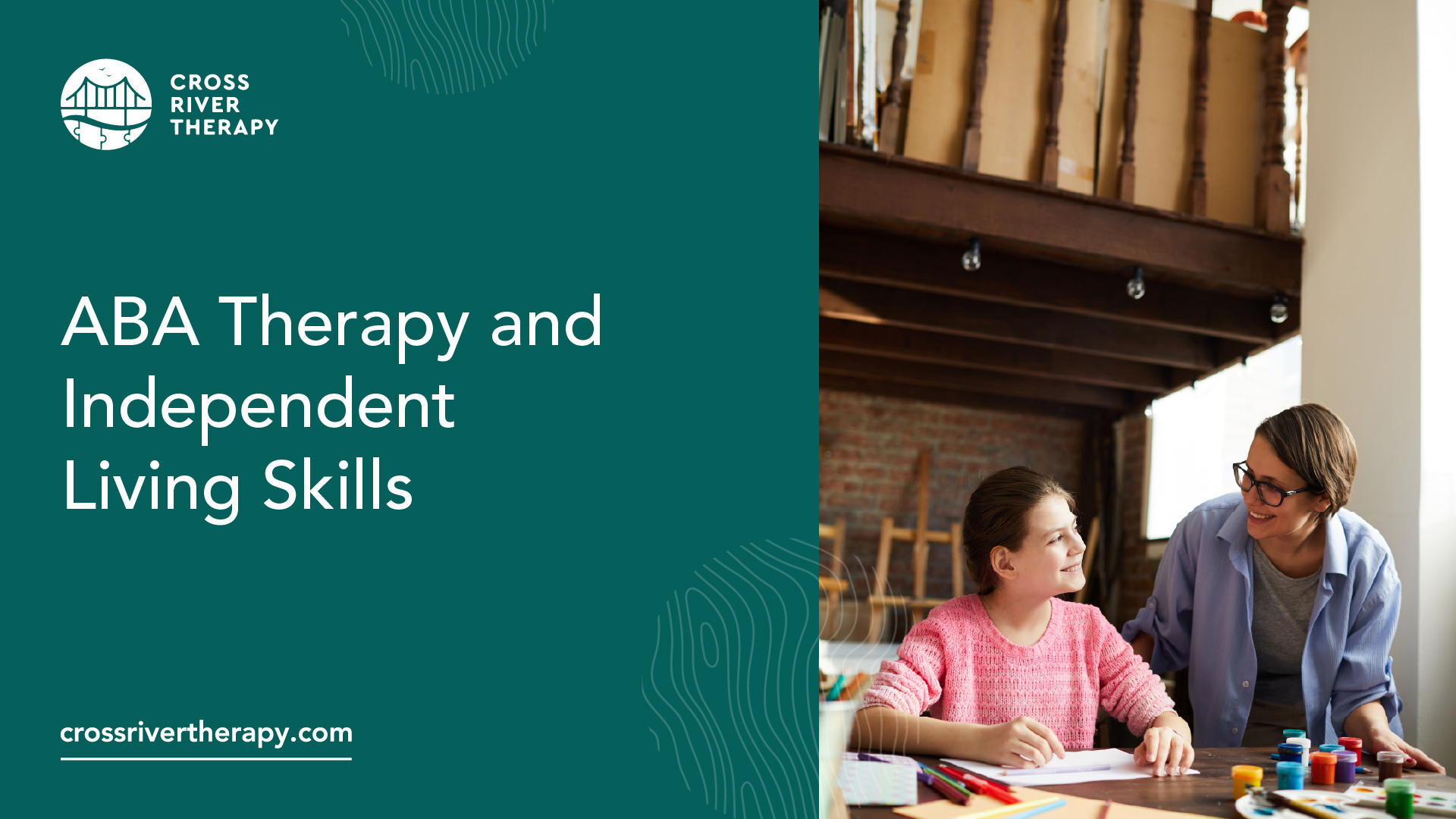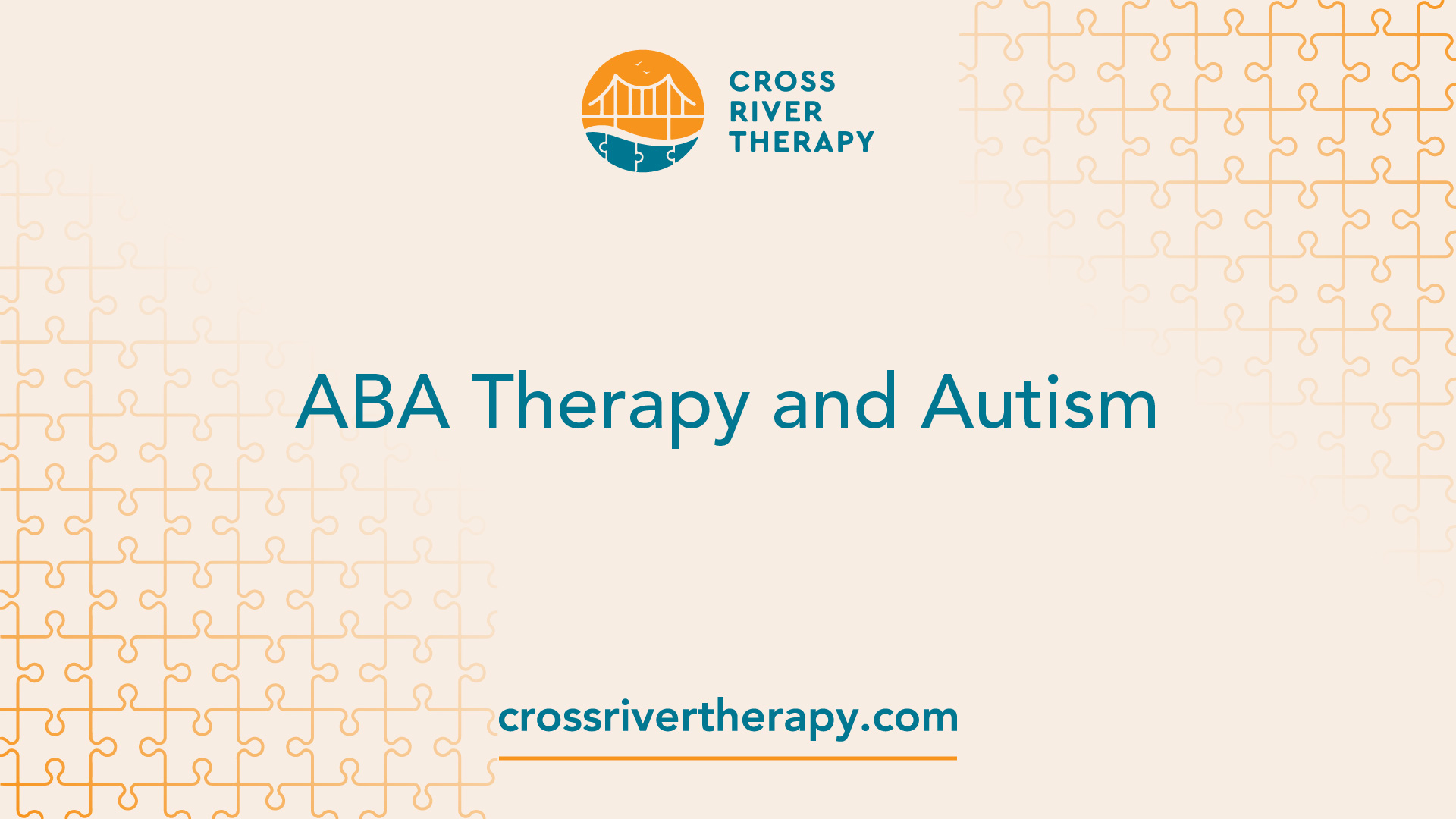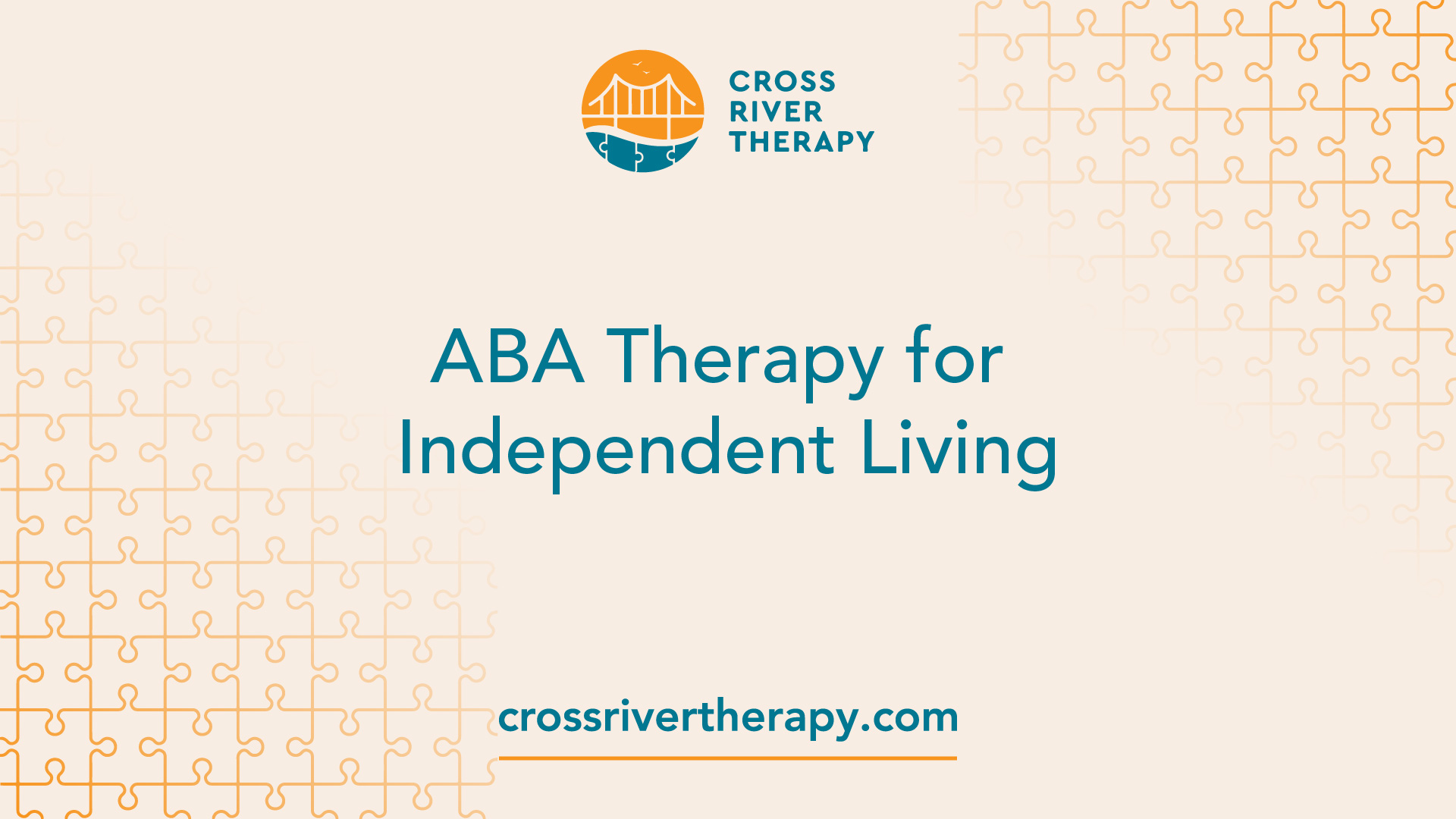ABA Therapy and Independent Living Skills
ABA therapy enhances independent living by focusing on daily routines and self-care, helping individuals live more independently.

Getting the Hang of ABA Therapy
ABA (Applied Behavior Analysis) therapy is a game-changer for folks with autism. It's all about understanding and tweaking behavior using tried-and-true methods. By breaking down big tasks into bite-sized pieces, ABA therapy helps people pick up crucial life skills and move towards being more independent.
The Nuts and Bolts of ABA Therapy
ABA therapy is a team effort. You've got a behavior analyst, usually a Board Certified Behavior Analyst (BCBA), working closely with the person with autism. The BCBA crafts a unique therapy plan that takes into account the person's skills, needs, likes, dislikes, and family dynamics.
This personalized approach ensures that the therapy is consistent and supportive, making it easier for the person to make progress.
Why ABA Therapy Rocks?
ABA therapy has a ton of perks for people with autism. It helps with talking, making friends, and learning important life skills.
By focusing on specific behaviors and using proven techniques, ABA therapists can make a real difference in someone's life.
ABA therapy is often seen as the gold standard for treating autism because it's so effective. It covers a wide range of skills, from communication to socializing, and even helps reduce challenging behaviors.
Techniques like Discrete Trial Training (DTT), Antecedent-based Interventions (ABI), and Extinction Techniques are used to improve behavior and skills, helping people become more independent and enjoy a better quality of life.
In the next sections, we'll dive into the different techniques and processes used in ABA therapy and how they specifically help with developing independent living skills.
ABA Therapy Techniques
ABA therapy is all about helping folks with autism build up their independent living skills. It's not just a one-size-fits-all approach; it's a mix of different techniques that focus on understanding and changing behaviors.
Understanding Behavior
At the heart of ABA therapy is figuring out why people do what they do. Behavior analysts break down actions into bite-sized pieces to see what triggers them and what happens afterward. This helps them understand the "why" behind behaviors.
Once they get the hang of it, they come up with ways to tackle tough behaviors and teach new, better ones. This often involves rewards (like giving a treat for good behavior) or taking away something unpleasant.
With consistent practice, folks with autism can swap out bad habits for good ones.
Personalized Therapy Plans
One of the best things about ABA therapy is how it’s tailored to each person. A trained behavior analyst, usually a Board-Certified Behavior Analyst (BCBA), crafts a plan that fits the person's strengths, challenges, and interests.
Personalization is key. By making the therapy fit the person, ABA therapists create a supportive environment that helps them thrive. They keep track of progress and tweak the plan as needed.
This personalized approach goes beyond just the therapy sessions. It involves working with the person's family and caregivers to make sure the skills learned in therapy are used in everyday life. This teamwork helps the person with autism apply what they’ve learned, making them more independent.
By mixing behavior analysis with personalized plans, ABA therapy gives people with autism the tools they need to live more independently. These skills are crucial for improving their quality of life and helping them become part of the community.
For more on how ABA therapy helps with job skills, check out our article on ABA therapy and vocational skills.
ABA Therapy and Autism

ABA therapy is a game-changer for folks with autism spectrum disorder (ASD). Let's dive into some real-life stories that show how ABA therapy can boost independence and help develop essential skills.
Real-Life Wins with ABA
Take the story of a teenager with autism who went through ABA therapy. The focus was on everyday tasks like personal hygiene, grooming, and household chores.
With targeted help and steady support, this teenager saw huge gains in independence and self-confidence [2].
Another story features a young child with autism who improved social skills through ABA therapy. The therapy zeroed in on skills like taking turns, sharing, and reading nonverbal cues.
Thanks to these focused efforts, the child made noticeable strides in social interactions and friendships.
These stories show how ABA therapy can be customized to meet the unique needs of each person with autism, helping them become more independent and improving their quality of life. The personalized approach of ABA therapy means it can target specific areas where someone needs help.
Building Essential Skills
ABA therapy covers a lot of ground to help people with autism become more independent. This includes communication, social skills, daily living tasks, and reducing challenging behaviors.
Techniques like Discrete Trial Training (DTT), Antecedent-based Interventions (ABI), and Extinction Techniques are used to improve behavior and skills, aiming for greater independence and a better quality of life.
The beauty of ABA therapy is its personalized touch. Therapists assess each person's needs and create custom treatment plans to tackle specific challenges and goals.
They keep track of progress and adjust the therapy as needed, ensuring it stays effective and relevant [3].
ABA therapy is key in teaching independent living skills to people with autism, helping them thrive in their daily lives. With personalized plans, data collection, and progress monitoring, ABA therapy equips individuals with the skills they need to be more independent and improve their overall well-being [3].
Next up, we'll look at how ABA therapy works and the roles of behavior analysts and therapists in helping people grow and make progress.
ABA Therapy Process
Understanding ABA therapy and the roles of the folks involved is key for parents looking to help their kids with autism. The process usually involves behavior analysts and therapists teaming up to create and carry out personalized therapy plans.
Role of Behavior Analysts
Behavior analysts are the brains behind the ABA therapy process. These pros, often Board Certified Behavior Analysts (BCBAs), are trained to assess, analyze, and design treatment plans for kids with autism. They know how to use behavior analysis principles to tackle specific challenges and help kids develop new skills.
In ABA therapy, behavior analysts are in charge of:
- Conducting assessments: They gather info about the child's strengths, challenges, likes, and family dynamics. This helps set the goals for therapy.
- Designing therapy programs: Based on the assessments, they create personalized therapy plans that target the child's specific needs. These plans outline the skills to be worked on and the strategies to use.
- Training and supervising therapists: They train and oversee therapists or registered behavior technicians (RBTs) who work directly with the kids. They make sure therapists have the skills needed to carry out the therapy effectively.
Involvement of Therapists
Therapists or RBTs are the hands-on folks in ABA therapy. They work directly with kids with autism, practicing skills and working towards goals under the guidance of behavior analysts. They provide consistent support and instruction to help kids learn and apply skills in different settings.
Therapists in ABA therapy are responsible for:
- Implementing therapy programs: They follow the plans made by behavior analysts, using specific teaching strategies and behavior management techniques. They provide one-on-one instruction, working on goals and tracking progress.
- Collecting data: They gather data on the child's responses and progress during sessions. This helps behavior analysts see how well the interventions are working and make any needed changes.
- Collaborating with the behavior analyst: They regularly communicate with behavior analysts, sharing updates, discussing challenges, and getting guidance. This teamwork ensures therapy stays on track with the child's needs and goals.
By working together, behavior analysts and therapists create a strong support system for kids with autism, making sure therapy is personalized and effective. Knowing what these professionals do can help parents make informed decisions about their child's development.
Want to learn more about how ABA therapy can help in different areas of life? Check out our articles on ABA therapy and inclusive education, ABA therapy and community inclusion, ABA therapy for transition planning, and ABA therapy and vocational skills.
ABA Therapy Outcomes
ABA therapy aims to make life better for folks with autism by teaching them crucial skills. Tons of studies show that ABA therapy works wonders, helping with everything from daily tasks to social skills.
Let's break down the good stuff from these studies and see how ABA therapy helps with everyday living.
Positive Results in Studies
Over 20 studies have shown that long-term, intensive ABA therapy can make a big difference for kids with autism. We're talking about improvements in thinking, talking, daily tasks, and social skills.
A review of ABA's impact on kids with autism showed gains in many areas, like thinking, talking, social skills, behavior, and emotions. This review really highlights how ABA therapy can help across the board.
One standout study from UCLA found that 47% of kids in ABA therapy reached normal intellectual and educational levels, compared to just 2% in a control group. That's a huge difference and shows just how powerful ABA therapy can be.
Impact on Daily Living Skills
ABA therapy is a game-changer for teaching daily living skills to people with autism. These skills include things like brushing teeth, cooking, cleaning, managing time, and taking care of oneself.
ABA therapy helps kids with autism do these tasks on their own, especially those related to school, social interactions, and daily activities. One study emphasized how important ABA is for helping kids with autism become more independent.
By using personalized teaching methods that fit each person's needs, ABA therapy helps people with autism learn and get better at daily tasks. It breaks tasks down into small steps and uses positive reinforcement to encourage good behavior.
This approach helps people become more independent in their everyday lives.
ABA therapy focuses on skills like personal grooming, household chores, managing money, and getting around. It gives people the tools they need to handle their surroundings and take part in meaningful activities.
This focus on independence boosts the overall quality of life for people with autism.
The positive results from studies and the impact on daily living skills show how effective ABA therapy is for people with autism. Through customized therapy programs and behavior analysis, ABA therapy helps people gain the skills they need to live more independent and fulfilling lives.
ABA Therapy for Independent Living

Helping folks with autism gain independence is where ABA therapy shines. This therapy uses behavior analysis to teach essential life skills, making everyday tasks easier and more manageable.
ABA therapists create personalized plans to fit each person's unique needs and learning styles, ensuring the best results.
Why Independence Matters?
Independence is key to a happy, meaningful life. For those with autism, learning to live independently boosts confidence and helps them take part in their communities. ABA therapy focuses on building these skills, covering everything from self-care to household chores and community involvement.
How Skills Are Taught?
ABA therapy breaks down complex skills into bite-sized pieces, making them easier to learn. This step-by-step approach helps individuals with autism build a strong foundation for independence.
Here’s a look at some of the skills ABA therapy covers:
- Self-care: Personal hygiene, dressing, grooming, and meal prep are all part of the package. These skills help individuals take care of themselves daily.
- Household chores: Cleaning, doing laundry, and organizing are also on the list. Learning these tasks helps individuals contribute to their home life.
- Community involvement: Skills like using public transportation, handling social situations, and joining in recreational activities are taught to help individuals engage with their communities.
ABA therapists use various strategies to teach these skills, such as task analysis, visual aids, prompting, reinforcement, and generalization exercises. By tailoring therapy to each person, therapists create a supportive environment that encourages progress.
In short, ABA therapy empowers individuals with autism to live more independently by teaching a wide range of skills. Personalized plans, data collection, and progress monitoring help individuals work towards self-care, household management, and community engagement.
With ABA therapy, individuals gain the tools they need to lead more independent and fulfilling lives [3].
References
[1]: https://www.autismspeaks.org/applied-behavior-analysis
[2]: https://www.adinaaba.com/post/what-are-the-examples-of-aba-therapy-for-autism
[3]: https://www.ambitionsaba.com/resources/aba-therapy-and-independent-living-skills
[4]: https://www.ncbi.nlm.nih.gov/pmc/articles/PMC9458805/
[5]: https://www.ncbi.nlm.nih.gov/pmc/articles/PMC10169625/



